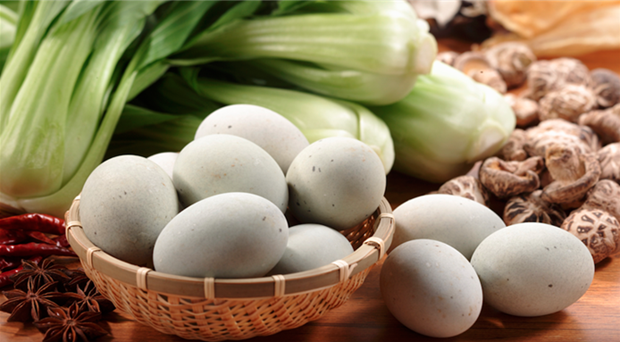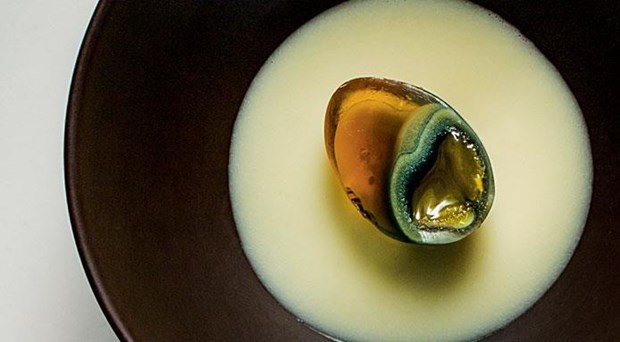It holds the title of being one of the strangest foods in the world. Some find it alluring while others can't phatom tasting it: we are referring to none other than the century egg.
What is a century
egg?
Also
known as thousand-year-old egg, a century egg is a Chinese delicacy. It is a
duck egg (rarely hen or quail eggs are also used) that undergoes a very
particular fermentation process.

Photo Stockfood.
The
egg is submerged in a mixture of water, salt, coal, and calcium oxide for one
hundred days.
In
this period the shell is dissolved (totally or in large part) by the saline
solution, the albumen (the white part of the egg) turns into an amber and
gelatinous mass, while the yolk takes on a dark green coloring that resembles
mold.
The
result is an egg with a sharp flavour, which some may not find appetising but,
nonetheless, is worth trying at least once.
Century egg: Origins

Photo: Flickr.com/LeeLeFever
The
century egg is part of the Chinese gastronomic tradition. The origins of this
food are uncertain even if, without a doubt, its preparation technique has been
known for over five centuries.
Once,
in order to prepare these eggs, tea was infused with quicklime, ash, salt, and
ashes from wood. The obtained paste was used to cover the egg shell completely.
The eggs were then covered with rice husks and would 'ripen' over time.
Nowadays,
the technique is simpler and faster thanks to modern chemical knowledge (today
a mix of salt, coal, and calcium oxide is used).
Century egg: Tips in
the kitchen
The
century egg can be served as an appetiser or aperitif; it is often consumed
alone. Alternatively, its intense flavour may be ideal for enriching a soup or
accompanying salads and fermented vegetables.
For
a very special occasion you can try making this exquisite thousand-year-old-egg
recipe (pictured above) from Michelin-starred chef Corey Lee from San
Francisco's Benu restaurant.
Theo FDL